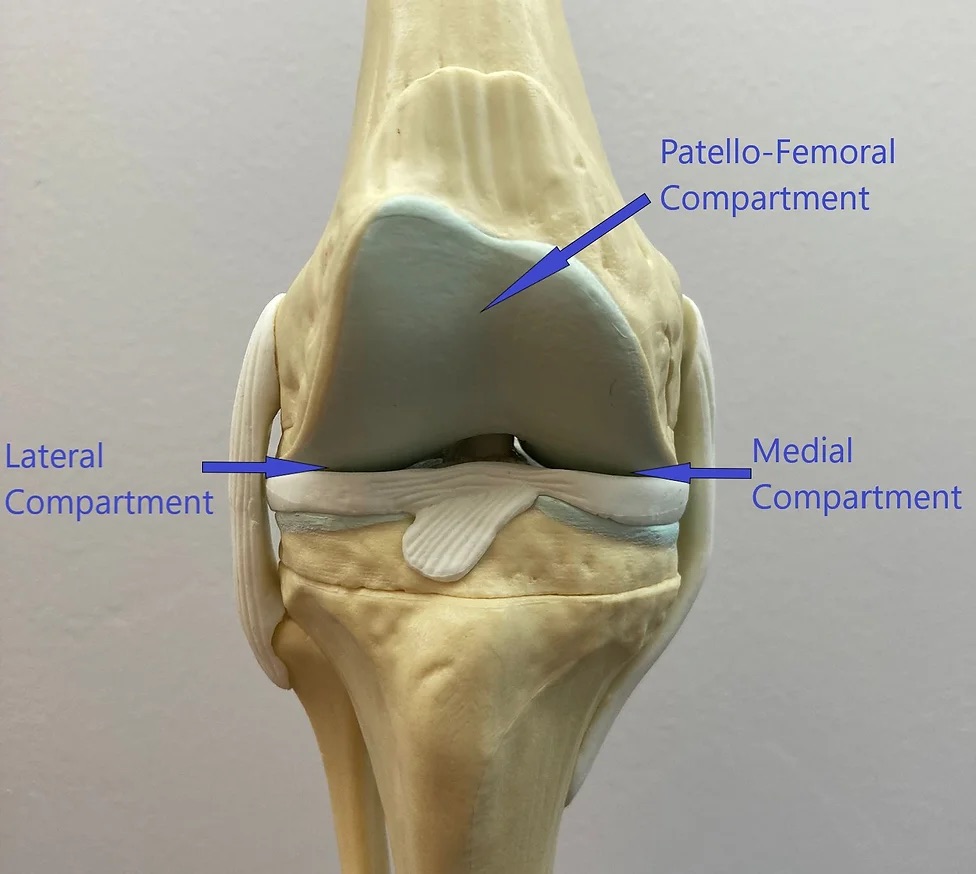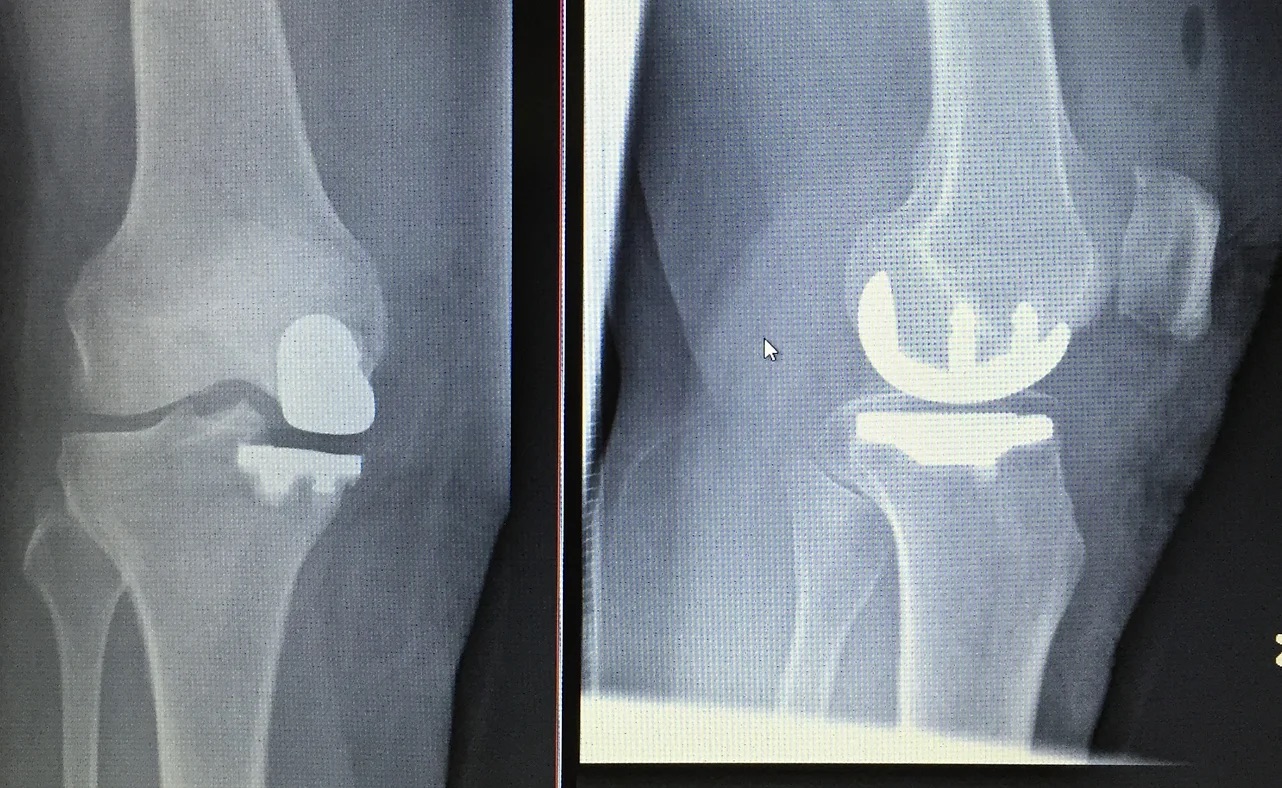
Partial Knee Replacement
Partial Knee Replacement
The picture shows the right knee, as seen from the front. The compartments of the knee are:
1) Medial (on the inside of the knee)
2) Lateral (on the outside of the knee)
3) Patello-femoral (at the front of the knee)


A right knee UKR - front view (left) and side view (right)
Modern-day UKRs were developed in the 1970’s. This follows modern-day TKR development in the 1960’s.
In the 1980’s, surgeons began to realise that patient selection for the UKR surgery is very important in achieving good outcomes, as poor patient selection led to early failures and revision surgeries.
Today, UKR is a very good surgery for persistent knee pain localised to a single compartment. The two patient groups where this is suitable are 1) the young patient with arthritis (<50 years old), 2) the elderly patient with arthritis (>75 years old).
.A UKR allows the patient to retain more movement and activity of the knee. Thus, it is more suitable for young patients who wish to retain physical activity. Some patients are able to return to running after a UKR surgery. However, the patient will also be given the appropriate expectations that the UKR allows them to retain good activity for the next 15 years, and there is a likelihood that he/she will have to undergo a second surgery to change the UKR to a TKR in future.
The other group where the UKR is suitable will be elderly patients where the arthritis is confined mainly to one compartment. This is because a UKR surgery is less invasive and has slightly less associated risks, as compared with a TKR surgery, and so is safer for the elderly.
However, as compared to a TKR, a UKR lasts shorter (read this page). That is why when UKR is done in young patients, appropriate expectations must be given to the patient.
Centurion Orthopaedic Centre
38 Irrawaddy Road
Mt Elizabeth Novena Hospital Specialist Centre #07-40
Singapore 329563









